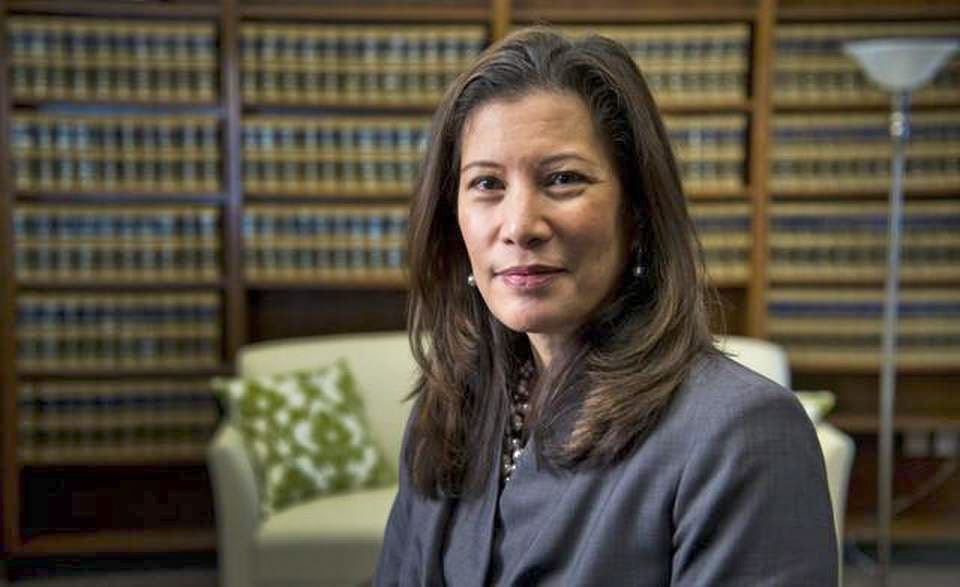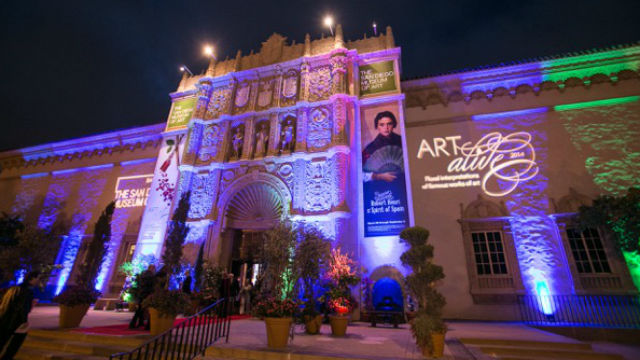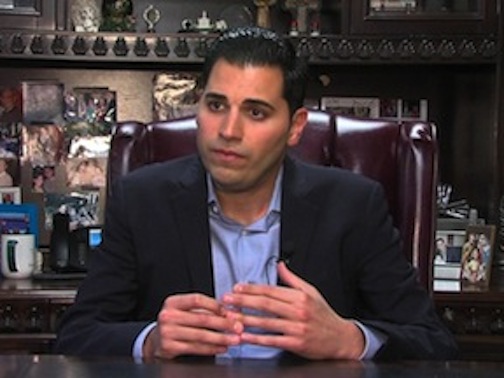Daily Business Report-April 20, 2015
The annual Art Alive show at the San Diego Museum of Art.
Art Alive Floral Displays Honor
Balboa Park Centennial
The San Diego Museum of Art will be transformed with living art as more than 100 floral designers bring the Museum’s permanent collection to life during the 34th annual Art Alive fundraiser April 24-26.
The museum’s signature fundraiser and San Diego tradition, Art Alive 2015 showcases exquisite floral displays infused with three days of celebrations from Friday though Sunday.
This year, Art Alive will honor the 100th anniversary of Balboa Park. Designer Rene van Rems will transform the museum’s central rotunda into a lush and beautiful floral design and art experience reflective of the Victorian era in Europe and the early days in San Diego. His design will incorporate California-grown flowers such as white hydrangeas, trumpet lilies, carnations and flowering herbs.
This year’s floral exhibition will be open from 9 a.m. to 5 p.m. Friday through Sunday. General admission is free for members, $20 for nonmembers, and free for children age 6 and under.
Other events planned are:
Bloom Bash — The opening celebration at 7 p.m. Friday. Tickets are $200 for members and $250 for others.
Garden of Activities — Family activites from noon to 4 p.m. on Saturday and Sunday
Floral Lecture — From Fabergé to Cartier, independent curator Timothy Adams will speak at 10 a.m. Saturday on the influence of flowers and nature on goldsmiths from the turn of the 20th century to present. Tickets re $15 for members and $25 for others
Floral Masterclass — Inspired by Balboa Park’s Centennial, the 2015 Floral Masterclass at 10 a.m. Sunday takes inspiration from the California garden-style arrangements in fashion at the time. Workshop attendees will create and take home an elegant arrangement pairing traditional European elements with a California twist. Tickets are $100 members, $125 for others, and include a continental breakfast.
As the museum’s largest annual fundraiser, Art Alive highlights the permanent collection to provide critical support for education, outreach programs and special exhibitions year-round.
— Times of San Diego

Governor Puts Additional Burden on Chair
Of Citizens Stadium Advisory Group
Gov. Jerry Brown couldn’t let Adam Day leave the 25-member California State University Board of Trustees, even though the 45-year-old political insider has plenty of work as chairman of the mayor’s Citizens Stadium Advisory Group and his “day job” as assistant tribal manager for the Sycuan Band of the Kumeyaay Nation, owners of the Sycuan Resort & Casino.
So the governor reappointed Day to an eight-year term on the board of trustees, which he has served on since 2014. Its next meeting is May 19-20.
Day has a long history in government, politics and public relations. He was general manager at NCG Porter Novelli from 2000 to 2002, vice president at the Flannery Group from 1999 to 2000 and chief of staff in San Diego County Supervisor Dianne Jacob’s office from 1996 to 1999, and senior policy advisor from 1993 to 1995.
Day served as deputy chief of staff in the office of County Supervisor Greg Cox from 1995 to 1996, was campaign manager for the Dianne Jacob for Supervisor campaign from 1992 to 1993, a policy adviser in the office of County Supervisor George Bailey from 1990 to 1992 and served as defense and foreign affairs legislative assistant for Sen. Pete Wilson in 1990.
The Senate must confirm Day’s reappointment. The compensation is $100 per diem. Day is a Republican.
NASSCO Launches World’s First
LNG-Powered Container Ship
In a nighttime ceremony before 3,400 shipyard workers and dignitaries, General Dynamics NASSCO on Saturday launched the world’s first natural-gas powered container ship. After christening by Sophie Sacco — wife of Michael Sacco, president of the Seafarers International Union –the 754-foot-long Isla Bella slid into San Diego Bay on the high tide at 9:10 p.m. Fireworks erupted as the ship floated.
“Those of you in the cheap seats — this is your ship. Give yourselves a hand,” said Rep. Duncan Hunter to cheers from the thousands of workers surrounding the giant vessel at the shipyard in Barrio Logan.
The ship was under construction for two years, and a sister ship being built nearby will be launched in August. The two ships will be used for service to Puerto Rico by New Jersey-based TOTE Maritime, a transportation and logistics company.
The ship was designed by DSEC, a South Korean-based company that has partnered with NASSCO to build other commercial ships. By burning liquified natural gas, instead of the traditional bunker oil, the ship will be more efficient and significantly less polluting.
“Everything you’re seeing here is new,” said Anthony Chiarello, president and CEO of TOTE, but he predicted it would be the safest and most reliable container ship built. “God bless this great, American-built vessel.”
The two ships represent a $750 million investment by TOTE. The company has the youngest fleet exclusively serving U.S. ports under the Jones Act, which requires American-built ships and crews.
Earlier this month, the Biglift Shipping vessel Happy Dynamic called at the Tenth Avenue Marine Terminal with a load of specialty cargo used by NASSCO in constructing the LNG-powered container vessels.
— Times of San Diego

Ballpark Village Project Hailed as
Model Public-Private Development
Developers, community groups and the city of San Diego joined in the groundbreaking Friday for a 37-story apartment tower adjacent to Petco Park in Downtown’s East Village.
The 720-unit Ballpark Village project, some 10 years in the making, was developed by JMI Realty and will be built by Greystar. Some of the units will be set aside for affordable housing.
Mayor Kevin Faulconer hailed the public-private partnership involved and its impact on revitalizing the East Village neighborhood.
“We do great things in this city when we work together,” he told a crowd gathered for the groundbreaking.
The agreement between the developers and the city includes a commitment to provide 163 units of affordable housing and living-wage jobs during construction and afterward.
“Ballpark Village provides a timely model for future development in San Diego,” said Peter Brownnell, research director for the Center on Policy Initiatives. The organization said community involvement and a community benefits agreement should be required for any development receiving taxpayer dollars.
Ballpark Village will rise on 3.9 acres bounded by Park Boulevard and Imperial and 12th avenues, just east of Petco Park, and will include 58,000 square feet of retail space and 267 public parking spaces for Padres games and special events.
The City Council approved a transfer of the development agreement to Greystar, from JMI Realty, at last Monday’s meeting.
The project is expected to be completed in 2018, though the first apartments would be ready for occupancy in the third quarter of 2017.
— Times of San Diego
County Mandatory Water
Cutbacks Decreased to 16 Percent
The State Water Board Saturday adjusted mandatory water cutbacks for government water agencies to enforce on their customers, to avoid penalizing groups of people who have already cut back per capita usage.
But the mandatory cutbacks were increased slightly for areas where water usage is very high, such as Fallbrook, and other places where lush landscaping is blamed for sucking the state dry.
Districts and cities that have more than 215 gallons per day in average per capita use must slash their total usage by 36 percent, the State Water Board ordered. That’s up a hair from earlier cutback orders of 35 percent.
City of San Diego customers face an aggregate 16 percent cutback, rather than 20 percent. Los Angeles and its DWP got a similar partial reprieve.
Water agencies are ordered to accomplish the water usage cutbacks starting in June, and reach compliance by next February.
Previously, the board had put California water districts in four categories. That has become nine categories, and areas that have already demonstrated accomplishments in water use reductions have been given a break. So have low-income, densely populated cities where water consumption per person is very low, and where 4 percent reductions have been ordered.
The California Water Company’s customers in San Diego for example, have already cut back water use by 8 percent, and use just 52 gallons per day per person. They face another 8 percent conservation target.
At the other end of the spectrum are Fallbrook, Rancho Santa Fe and other wealthy enclaves, where lush landscaping and large lots cause a gigantic increase in drinking water use. People in Rancho Santa Fe buy nearly 605 gallons of water per person per day.
Those areas must cut water use by 36 percent or face penalties, rate hikes, or more-drastic measures, the State Water Board has ruled.
— City News Service
Mexico Trade Initiative to Focus
Key Issues Impacting Businesses
Aiming to advocate for a unified mega region, the San Diego Regional Chamber of Commerce is leading a delegation of 75 business leaders and elected officials from San Diego and Mexico on the 10th annual California-Mexico Trade Initiative trip to Mexico City. The trip began Sunday and runs through Wednesday.
The trip will provide participants an opportunity to meet and converse with key federal and other elected officials from both sides of the border, as well as representatives from select industries and organizations to discuss international commerce, foreign investment opportunities, and policy. The conversations will center on the recent agreements signed between the state of California and Mexico, which highlight collaboration in the areas of cross-border trade, innovation and technology, border infrastructure, education, and water and energy.
“Our continued efforts to enhance cross-border business speaks highly about San Diego at a local and international level as we strive to showcase our mega-region as a global competitor,” said Jerry Sanders, president and CEO of the San Diego Regional Chamber. “Our annual delegation trip to Mexico City provides a valuable opportunity to raise our binational region’s profile and that of our member businesses as we advocate for policies that enhance trade and commerce, while also strengthening our global competiveness.”

California Supreme Court
Chief Justice to Visit Encinitas School
El Camino Creek Elementary School in Encinitas will get a visit from California Supreme Court Justice Tani G. Cantil-Sakauye on Thursday to present the school with a 2015 Civic Learning Award. Cantil-Sakauye
will present the school with an Award of Excellence, the highest level.
The school is one of only three schools in the state getting the award.
Among the many civic learning opportunities students experience at El Camino Creek Elementary, the award highlights three specific programs: “Environmental Stewards,” which involves students in the Garden Life Lab, and the Scrap Cart program in efforts to make the planet a healthier place in which to live; and the piloting of two separate mock trial units in partnership with California State University San Marcos.
“What I see in our public schools, the level of dedication our teachers and students have to their communities, is inspirational. I’m really looking forward to meeting the younger recipients we recognize with this year’s award,” said Cantil-Sakauye.
San Diego Considers Offering
3 Paid Sick Days for City Employes
The San Diego City Council in a few weeks will consider a plan to offer up to three paid sick days a year to hourly employees, beginning July 1, city leaders and a state legislator announced.
The benefit is the result of a bill authored by Assemblywoman Lorena Gonzalez that was signed into law by Gov. Jerry Brown.
Councilman Todd Gloria said the city’s unions have agreed to terms of an implementation plan for the city. The plan will go to the City Council for approval soon, he said.
More than 1,360 city employees — mainly library and recreational staff, and hourly lifeguards — would be eligible.
“These staff members cannot take time off if they are sick, or if their child or their parent is ill and requires care,” Gloria said. “As an employer, we should want these folks who regularly interact with the public to have the opportunity to take care of their health when they need to.”
The legislation from Gonzalez entitles people employed in California for 30 or more days in a year to earn at least one hour of paid sick leave for every 30 hours worked.
She said she hopes the law will be good for businesses, too, with “a happier and healthier workforce and a more productive workforce.”
According to Gloria, financial management staff has estimated the benefit will cost the city budget just over $471,000 annually.
— City News Service



